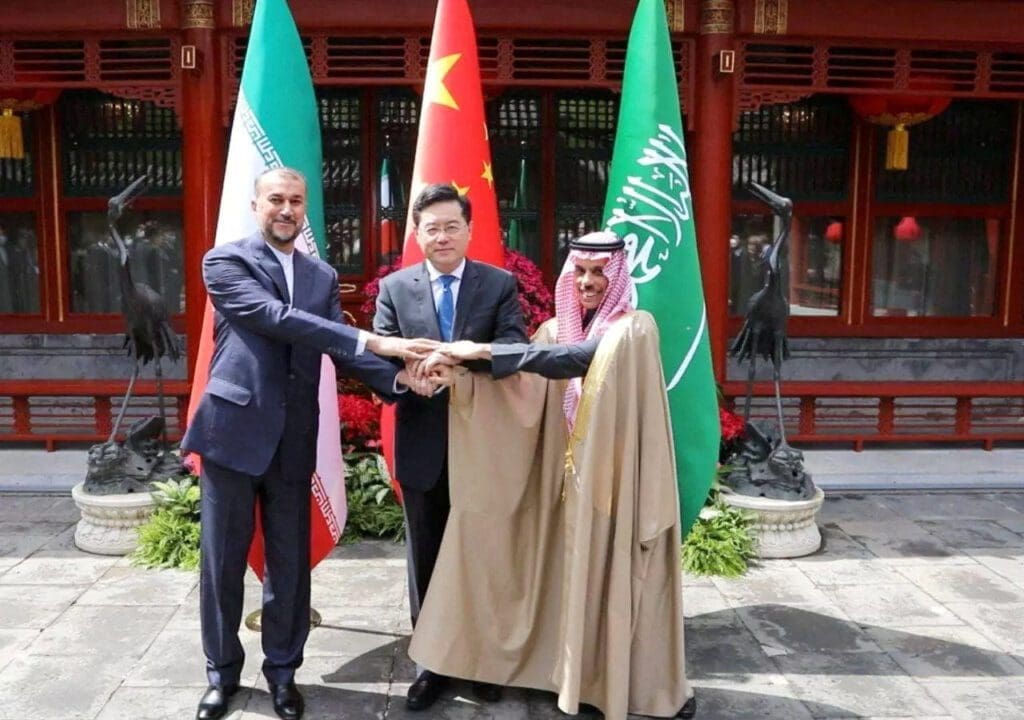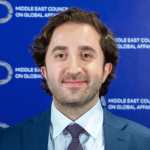The March 6 announcement that Saudi Arabia and Iran were re-establishing diplomatic ties was an important moment for the Middle East. The Chinese-brokered deal has the potential to end the devastating eight-year conflict in Yemen and address geopolitical tensions elsewhere. From the Saudi perspective, it may end Iranian proxy attacks on Saudi oil facilities, including drone strikes launched from Yemen by the Iran-sponsored Houthis. For the Iranians, the agreement could ease external pressures on the Islamic Republic and its clerical rulers as they grapple with an existential and unprecedented uprising.
However, this deal will not bring peace to the broader Middle East anytime soon. Saudi Arabia and Iran have spent two decades fighting proxy wars in Iraq, Lebanon, Syria, and Yemen, as part of a fierce regional struggle for geopolitical influence. Iran and its Arab rivals have backed dozens of competing groups to further their respective regional aspirations, regionalizing and intensifying civil conflicts that have claimed hundreds of thousands of lives and displaced millions. In the process, armed non-state actors have emerged as powerful actors in their own right, with their own agency and their own agendas. Even if Riyadh and Tehran mend fences, they will struggle to rein in the forces they have unleashed. Their respective proxies will have a decisive say over the future of the region.
Capitalizing on Conflict
The past decade has seen Middle Eastern and Western powers, not least Saudi Arabia and Iran, pour vast resources into proxy conflicts. This has led to a proliferation of armed groups, which have capitalized on conflict, state collapse, and the backing of external sponsors to transition from rag-tag militias to battle-hardened, resource-rich, and organizationally disciplined socio-political actors.
Today, hundreds of thousands of fighters affiliated with armed groups are operating across Syria, Iraq, Yemen, and Libya. The intensification of conflicts, fueled by outside backers, has created fertile conditions for this mushrooming. The bloodletting that has gripped the region since the 2011 Arab uprisings provided an opportunity for the most established groups, such as Lebanon’s Hezbollah, Iraq’s Asaib Ahl al-Haq, and Yemen’s Houthis, to swell their ranks with the economically desperate and the politically aggrieved, consolidating their hold on state and society in the process.
The Arab Spring uprisings and the ensuing civil conflicts that escalated into proxy wars weakened state institutions and precipitated turmoil. This paved the way for armed groups to re-shape state structures and domestic political orders. Some, such as the Popular Mobilization Forces in Iraq, did this by securing parliamentary seats and acquiring control of ministries. Others provided local governance that effectively supplanted the enfeebled central state. The YPG, for example, continues to preside over an autonomous Kurdish enclave in north-east Syria, while HTS is the predominant provider of security and governance in Idlib. In Iraq, Asaib Ahl al-Haq, which routinely threatens Saudi Arabia, commands fifteen seats in the Iraqi parliament. Yemen’s Houthis are the government in the areas of the country they control.
All this has taken place in a dire humanitarian context. The war in Syria has displaced more than 14 million people and according to official estimates, at least 300,000 people have been killed—around 1.5 percent of Syria’s pre-war population. The real number may be much higher. Some 15 million people need humanitarian aid in Syria, along with 21 million in Yemen and 2.4 million in Libya, despite the latter’s vast oil wealth. These crises mean that populations are likely to suffer long-term destitution. This bodes well for the prospects of armed groups, but not for long-term stability and efforts to prevent a relapse into conflict.
Peace Talks Without Fighters
The agreement between Saudi Arabia and Iran is premised on achieving region-wide stability. However, a peace process between states aiming to end their proxy wars is problematic if it sidelines the actors fighting on the ground. Moreover, the deal fails to account for the local contestations that have shaped the rivalry between Riyadh and Tehran. Conflict in the Middle East is also rooted in indigenous factors and rivalries that are beyond the influence of regional powers. Wars in Syria, Libya and Yemen emerged from the grievances of local populations in the context of the Arab Spring. In other words, peace between Saudi Arabia and Iran, and in the Middle East more broadly, will be determined by local politics and considerations in the arenas the two countries have fought over.
In these arenas, groups such as Hezbollah, the Houthis, and HTS will determine the balance of power on the ground. They are unlikely to make concessions that will undermine their standing, especially as they have the resilience and autonomy to function and prosper in the absence of external patronage. These armed groups have certainly relied on external actors to embolden their positions and consolidate their influence, but at the same time have tremendous resources at their disposal domestically, as well as ways of securing additional resources beyond their borders. They have multiple revenue streams, including from illicit cross-border trade, foreign patronage, natural resources, and extortion.
Moreover, it is difficult to envisage Iran demobilizing or reining in its proxies, which have transformed how the Islamic Republic projects its power. Iran’s influence across the region has grown considerably since the 2003 invasion of Iraq, and further still since civil wars broke out in Syria and Yemen, along with the rise of Islamic State. In Syria alone, Iran has mobilized and continues to supervise tens of thousands of Hezbollah fighters and other Shiite militiamen from Iraq, Pakistan, and Afghanistan, who fought alongside the Syrian regime.
These militias have turned large swathes of territory in Syria into Iranian-controlled corridors and launchpads for attacks on Tehran’s rivals. Hezbollah and Iraqi militias such as the Badr Organization, Kataib Hezbollah, Asaib Ahl al-Haq, and Harakat al-Nujabaa, with guidance and patronage from the Islamic Revolutionary Guards Corps (IRGC), are refashioning Syria and its society according to Iran’s interests and ideology, in much the same way they have done in Iraq. Iran’s proxies are continuing to entrench and consolidate their positions and have their own plans and visions which will, in turn, determine the contours of regional peace and security.
Middle East conflicts have had no shortage of purported peace agreements. In Syria, most of those agreements failed because negotiators were not acting in good faith, using talks as smokescreens to distract from the atrocities they were committing. But the talks were also notable for the absence of delegates from key belligerents. Such talks will continue to be futile unless these groups are included. China and other mediators must come to realize that peace in the Middle East will ultimately depend on rehabilitating institutions destroyed by conflict and building institutions that can implement the rule of law, deliver accountability and demobilize armed non-state actors.
The opinions expressed in this article are those of the author and do not necessarily reflect the views of the Middle East Council on Global Affairs.


